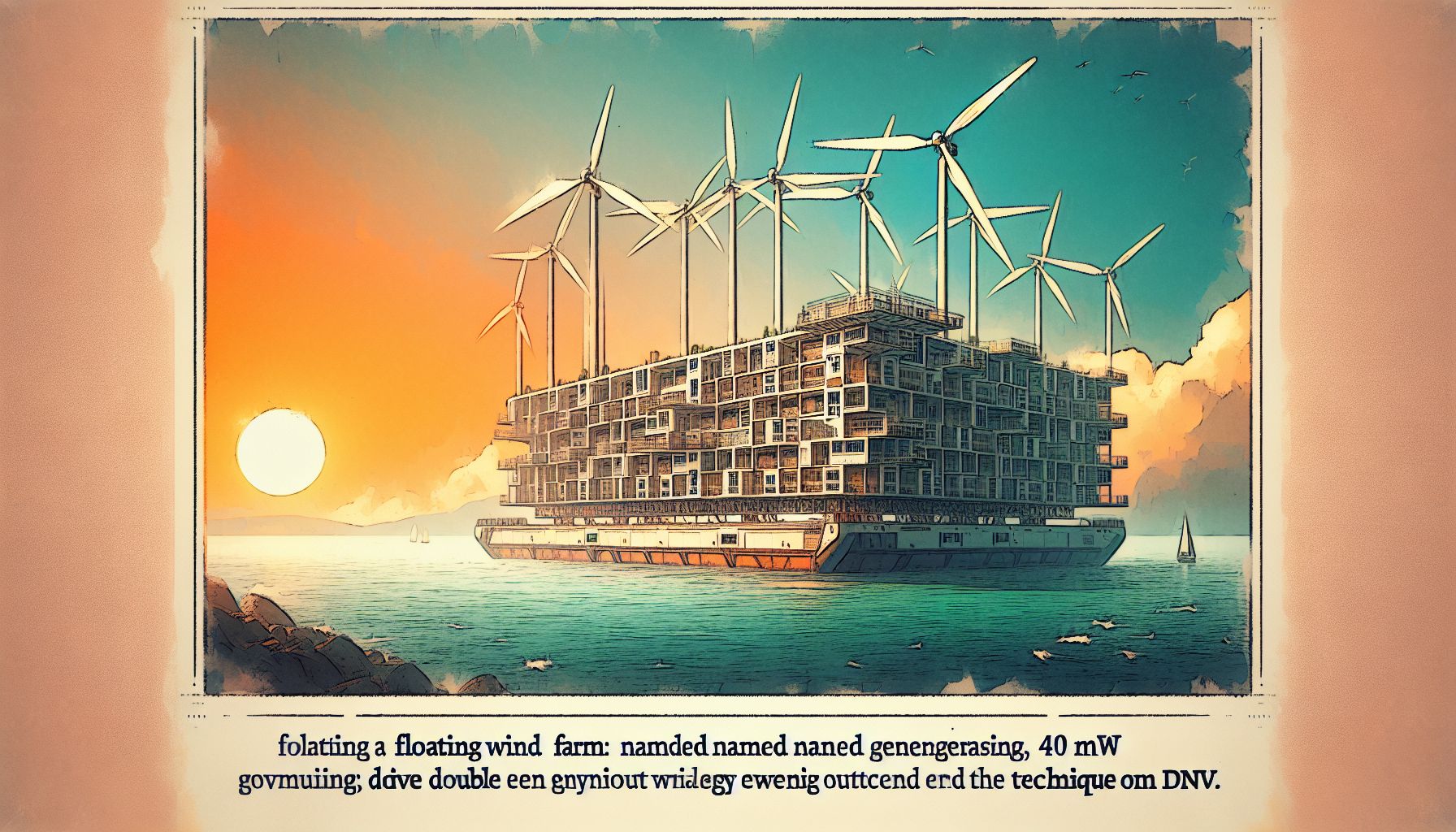Revolutionary 'Windcatcher' Floating Wind Farm Receives Design Approval

Norway, Wednesday, 24 July 2024.
Norwegian company Wind Catching Systems’ innovative ‘Windcatcher’ design, a floating wind farm capable of generating 40 MW of power, has received approval from DNV. This modular system promises to double energy output compared to standard turbines, potentially transforming offshore wind energy production.
An Innovative Leap in Wind Energy
Wind Catching Systems (WCS), a Norwegian company, is pioneering a new era in offshore wind energy with its ‘Windcatcher’ design. The unique floating wind farm, consisting of hundreds of small 1 MW turbines, has received Approval in Principle (AiP) from DNV, a renowned global classification agency. This certification is a crucial step, indicating that the design is technically sound and ready to move forward to the next stages of development[1].
Efficiency and Output
The Windcatcher is designed to be significantly more efficient than traditional wind turbines. WCS claims the system can capture 2.5 times more energy per square meter of wind flow compared to conventional three-blade turbines. This efficiency gain translates into the Windcatcher being able to generate up to 40 MW of power, with future plans to expand capacity to 126 MW[2].
Design and Technical Feasibility
The technical development of the Windcatcher has been a collaborative effort with engineering partners Aibel and Arup, who have brought their expertise in structural and marine design, stability, hydrodynamics, and safety to the project. A physical model of the Windcatcher was tested at the Stadt Towing Tank in Måløy, Norway, to evaluate its performance in various wave conditions, ensuring that it can withstand harsh open water environments[3].
Support and Funding
The Windcatcher project has received substantial support from Norway’s Enova fund, including a NKr9.3 million ($900,000) investment aimed at reducing the cost of floating wind power to €40-60 per MWh. Additionally, the project secured USD 10 million in Series A funding from GM Ventures and NOK 31.3 million (USD 3 million) in grants from Enova SF. This financial backing underscores the confidence in the Windcatcher’s potential to revolutionize offshore wind energy[1][4].
Future Prospects and Impact
With the AiP certification, WCS is now set to apply for a demonstration project license off the coast of Øygarden in southwest Norway. The successful deployment of the Windcatcher could pave the way for widespread adoption of this modular offshore floating wind energy system. Its ability to generate green hydrogen for use in transportation and industry further enhances its value proposition, potentially marking a significant milestone in the global transition to renewable energy[2][5].
Bronnen
- interestingengineering.com
- www.techtimes.com
- www.marinetechnologynews.com
- www.offshorewind.biz
- www.energetica-india.net

